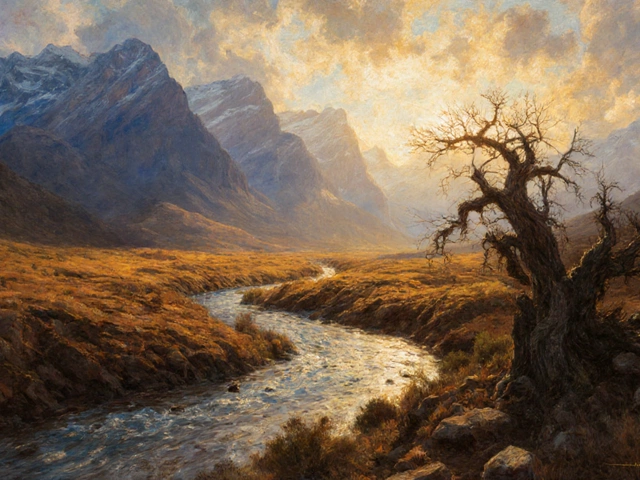Diving into the mystical world of music, one is often met with mainstream sounds that dominate the airwaves. Yet, beneath the surface, there exists a plethora of rare musical genres that seldom find their place in the limelight. These hidden gems, rich in culture and innovation, offer a fresh perspective into the artistic ingenuity that transcends commercial boundaries.
In this exploration, the rarity is defined not just by the obscurity of a genre but by its unique cultural narratives and historical significance. From the haunting melodies of Tuva throat singing to the rhythmic complexity of Zeuhl, rare genres paint a fascinating picture of global diversity. While contemporary technology and the internet have indeed shrunk distances and made global sharing possible, these genres remain distinct, thriving within committed communities that cherish their idiosyncratic charm.
This journey through sound will not only introduce these uncommon genres, but it will also provide insight into where one might discover these rare aural experiences. Whether an aficionado of eclectic music or a curious listener eager to step outside the predictable, there is a world of sound awaiting your exploration.
- Defining Rarity in Music Genres
- Historical Roots and Cultural Influences
- A Look at Specific Rare Genres
- The Role of Technology and the Internet in Rarity
- Discovering Rare Music
Defining Rarity in Music Genres
Rarity in music genres is a concept that intrigues many enthusiasts and scholars alike, largely because it challenges the prevalent paradigms of musical classification. When determining what makes a music genre 'rare', several factors come into play. One might initially think of rarity in terms of the number of performers or audiences familiar with the genre. However, it's not merely about statistics or popularity. A genre can also be considered rare if it exists outside the mainstream narrative, often resonating within niche communities or specific cultural settings. This rarity can stem from its historical origins, unique sound characteristics, or the cultural stories it tells. In the vibrant tapestry of global music, rare genres often remain hidden treasures waiting to be discovered by those willing to search beyond the beaten path.
One of the defining features of rare music genres is their roots in specific geographical or cultural areas, lending them an intrinsic connection to local traditions and practices. Take for example the polyphonic singing from the Republic of Georgia, which captivates listeners with its intricate harmonies. This particular sound is recognized by UNESCO as an intangible cultural heritage, illustrating its deep connection to its place of origin. Such forms of music encapsulate the essence of their environment, which can often lead to their rarity on global platforms as their reach is limited by locale-specific appeal and preservation within small communities.
"Rare music genres are not just about what you hear; they are about the experience they encapsulate. They carry ethos of their culture and history." - Dr. Miriam Kale, Musicologist at Global Sound Institute
Naming a genre 'rare' often also involves its accessibility, or lack thereof, in current media consumption patterns. The digital age has blessed us with vast access to countless genres, yet some remain elusive. The reason could be a limited number of recordings, challenges in translating the experience through modern mediums, or even the sheer difficulty in producing such music due to traditional methods. Rare genres often thrive in environments where oral traditions prevail, making them susceptible to the threats of modernity and occasionally resulting in a decline in practitioners who can pass on the craft.
Moreover, rarity does not equate to fragility. Many rare music genres have shown remarkable resilience over the years due to strong communal ties and dedicated practitioners. Certain genres may appear updated frequently during cultural events, traditional ceremonies, or through the efforts of dedicated preservationists. This resilience ensures that even with limited exposure outside their circles, these genres continue to flourish within their havens. A poignant example would be Japanese Imperial Court music, also known as Gagaku, which has been performed for centuries. Despite its limited recognition outside Japan, its preservation and continued performance underscore the communities' dedication to keeping such rare treasures alive.
To understand the current landscape of music, one must appreciate the rare music genres that remain an integral part of the world's auditory heritage. They serve as a reminder of the endless variety of human expression, highlighting the unique and inspiring creativity that pushes against the mainstream. For those willing to explore these sounds, the reward is a deeper connection to understanding humanity through its diverse manifestations of music.
Historical Roots and Cultural Influences
Across the vast tapestry of human existence, music has always been a mirror to our culture and history, weaving together stories, emotions, and traditions. Each rare genre carries with it the fingerprints of time and the whispers of ages past. To understand these unique sonic landscapes, it is crucial to delve into their historical roots and the cultural influences that shaped them.
Take, for instance, the ancient practice of Tuvan throat singing, known locally as khöömei. This unique art form, characterized by its deep, resonant harmonics, finds its roots among the nomadic herders of the Tuvan region in Siberia. The literal landscapes of staggering mountain ranges and echoing valleys influenced its development. It was a way for the nomads to communicate with their surroundings and, in many ways, a spiritual dialogue with nature. Songs often mimic natural sounds of wind and water, incorporating the environment into a complex vocal expression.
"The beauty of Tuvan throat singing lies in its seamless blending of human voice and nature’s voice," notes ethnomusicologist Theodore Levin. "It teaches us about the relationship between culture and the natural world."
Similarly, the genre of Zeuhl, which originated in France in the late 1960s, carries within it the radical spirit of its time. Created by the band Magma, Zeuhl reflects founder Christian Vander's love for jazz and progressive rock, as well as his fascination with spirituality and mythology. Its complex rhythms and operatic grandeur serve as a musical narrative, exploring themes of resistance, utopia, and cosmic odyssey. This was an era marked by social upheaval and creative liberation, and Zeuhl stands as a testament to those transformative years.
Another fascinating example is Qawwali, a Sufi devotional music that traces its roots back to 13th-century India and Pakistan. Traveling mystics and saints of the time used this rhythmic and soulful genre to spread teachings of love and spirituality. Over centuries, Qawwali evolved, absorbing local musical traditions and adopting elements from Persian and Indian classical music. Performed in a communal setting, it aims to bring listeners into a trance-like state, offering a spiritual awakening through its lyrical depth and emotive execution.
The impact of technology on these genres cannot be ignored. While many would assume that innovation distances us from cultural authenticity, it has surprisingly nurtured and preserved these unique styles. The internet, in its boundless expanse, has become a digital stage where rare music genres are shared and celebrated globally. Communities have sprung up around obscure musical practices, keeping the torch of traditional heritage burning bright while welcoming new interpretations and blends. Through these interactions, the past is not just recolated but reinvigorated, allowing rare music to reach wider audiences than ever before.
These stories remind us of the collective memory embedded in music. Each rare genre is not just a sound, but a vibrant archive of humanity’s rich, diverse journey across time and space. They offer us an opportunity to listen deeply, not just with our ears, but with our hearts and minds, linking us to the people and places from which they arose.

A Look at Specific Rare Genres
In the sprawling landscape of music, certain genres sprout in the unlikeliest of places, nurtured by tradition, environment, and innovation. One such genre that captures both imagination and history is Tuva throat singing. Originating from the Tuva region in southern Siberia, this musical art form is as ancient as the steppes it echoes. What makes it fascinating is its unique consonance, achieved when singers produce multiple harmonic overtones simultaneously, creating an otherworldly soundscape that’s eerily beautiful. Practiced for centuries by the Tuvan people, throat singing is often performed in spiritual rituals and represents a deep connection with nature. Tuvan songs are known to mimic the sounds of animals and the whisper of the wind, reflecting an intimate relationship with their surroundings.
Another rare musical cornerstone is Zeuhl, a genre that emerged from the avant-garde movements in France during the 1960s. Coined by the enigmatic Christian Vander, the founding member of the band Magma, Zeuhl is a cosmic blend of rock, jazz, and classical elements, sung in a constructed language known as Kobaïan. Its hypnotic rhythms and grandiose compositions carve a niche so unique that it remains unparalleled. Zeuhl bands often weave themes of mysticism and the esoteric, luring listeners into a theatrical sound journey.
“Zeuhl is the sound of the universe unfolding in a rhythmic dance”—Christian Vander.The genre’s elusive nature means its following is niche, yet ardent, with festivals celebrating its artistic potential.
Then there’s Tuvan throat singing, whose simplicity belies its profound impact. Emerging from the Khmer people of Cambodia, pinpeat is an acoustic ensemble music usually associated with ceremonial performances for temple dancers. What makes it extraordinary is its resilience; having survived attempts of cultural annihilation, it stands as a testament to the enduring spirit of Cambodian culture. With instruments like the sralai—a kind of oboe—and the different percussive sounds of gongs and drums, pinpeat music is vibrant and energetic, yet so deeply rooted in spiritual reverence. Its continuity owes much to the dedication of musicians preserving their cultural heritage against modernity’s tide.
Exploring these unique music types, we find that they often bear elements that defy conventional Western understanding of melody and harmony. The lesser-known PSD genre from the underground scene in New Zealand, amalgamating post-rock and shoegaze with danceable beats and atmospheric sounds, proves that innovation lives in obscurity. These rare genres are frequently guarded by dedicated aficionados and artists, who express authenticity and raw emotion that are often diluted in more mainstream music. Whether it's through local festivals or online platforms, these genres gradually weave their way into the global tapestry.
The Role of Technology and the Internet in Rarity
In the modern age, the internet has acted as both a magnifying glass and a melting pot for the world's music. For unique rare music genres, this means a rare balance between uncovering hidden sounds and maintaining their distinctive characters away from the masses. Technology has democratically allowed individuals to access a global stage; artists are no longer confined by geographical boundaries or restricted by traditional gatekeepers like record labels. This openness has fostered an environment where uncommon music styles can be born, experimented with, and shared with a wide audience at the click of a button.
However, it also presents a unique challenge. When everything is accessible, the distinction between mainstream and rare begins to blur. As a result, even the most unique and hidden music styles face the risk of dilution as they enter the broader market of listeners. Still, the internet has also become a platform for niche communities to flourish. These insular groups not only preserve but actively discuss, critique, and innovate within these genres. For instance, websites and platforms like Bandcamp and SoundCloud have become safe havens for artists working within rare genres, allowing them to reach fans directly without sacrificing their creative integrity.
Another dimension of technology's role comes from recommendation algorithms employed by streaming services. These algorithms, designed to predict user preferences, sometimes lead to delightful surprises. It's a digital equivalent of stumbling into an unknown band at a music festival. As listeners explore, they might find themselves guided toward strange but beautiful sounds they never intentionally sought out. "Long tail" economics suggest there's an audience for just about anything; even the most obscure music can find its devotees, thanks to digital distribution.
"The world is a big place, and there's music being made that people wouldn't believe exists." - David Byrne, musician and author
Technology also streamlines collaboration among artists worldwide. This collaboration often fuels the birth of unique music types by merging disparate elements into something new. The ease of file sharing and home studio production means that artists from different genres and cultural backgrounds can fuse their likes or even create something that entirely stands on its own as a new genre. Often, what might have been considered experimental or perhaps niche in a physical sense could now become pioneering in a digital space.
To illustrate technology's expansive role in understanding and supporting rare genres, data plays an illuminating role. A study by the Music Industry Research Association shows that 65% of independent artists rely heavily on social media and streaming platforms to promote their work. These tools are not just for distribution, but they also serve as feedback loops, informing artists of what resonates most with their audience. Below is a snapshot highlighting some key aspects of this dynamic:
| Platform | Primary Role for Artists |
|---|---|
| Bandcamp | Direct sales and fan engagement |
| SoundCloud | Sharing unreleased tracks and collaborations |
| YouTube | Visual content and reach expansion |
With technology wielding such influence over the landscape of rare music genres, the conversation now turns to listeners. Awareness and appreciation, powered by ease of access, mean today's music lover is equipped to explore and delve into these sounds. The potential to uncover hidden music styles becomes a collaborative journey through myriad digital channels, each offering pathways deeper into the world's most eclectic and enthralling soundscapes.

Discovering Rare Music
In the labyrinth of sound that is the music world, uncovering rare music genres can feel like embarking on a treasure hunt. Yet, with the right guidance and a touch of curiosity, one can navigate this colorful maze with ease. Today, technology plays a pivotal role in bringing obscure tunes to one's earbuds. Online platforms such as Bandcamp and SoundCloud have become fertile ground for indie artists to share niche creations, allowing listeners from across the globe to stumble upon music they might never have imagined. Enthusiasts should take note of these platforms, as their algorithms, unlike traditional record stores, push boundaries and offer unique listening experiences.
Moreover, there is an element of community driving this rare music discovery. Enthusiastic followers of unique music types create forums and social media groups where recommendations flourish and passionate discussions unfold. Such communities often unearth hidden gems through suggestions, shared playlists, and the excitement of discovery. Meanwhile, virtual events and niche music festivals offer immersive platforms where artists perform, providing audiences with an authentic experience. This contrasts sharply with mainstream concerts, as here, the connection often extends beyond just the music to the storytelling, the culture, and the artistry behind each note.
There is a certain thrill in unpredictability when you explore hidden music styles. Here, genres like vaporwave, zeuhl, or even Siberian throat singing can suddenly open up new dimensions of listening. Consider the rise of Bitpop, melding chiptune sounds with pop structures, to the soothing echoes of Japanese environmental music—a genre focusing on ambient soundscapes cultivated by the likes of Hiroshi Yoshimura. These tracks, some say, are not just heard but experienced. As music critic John Doe once noted,
"The rarest genres are the untamed wilderness of the music world, where rules are sparse and creativity reigns supreme."This sentiment captures the essence of these elusive sounds, which attract adventurers willing to venture beyond the familiar equator of popular music.
Yet, all is not lost in this vast ocean of sound, as uncommon music continues to thrive through meticulous archiving. Record labels specializing in archival reissues painstakingly rediscover and preserve these niche sounds, keeping their legacy alive. Labels like Light in the Attic and Numero Group have become archeologists of sound, presenting forgotten albums to new listeners. They bring stories from different eras and cultures back to life, forming a bridge between past and present. This resurgence often ensures these rare genres are not only remembered but cherished by new generations seeking alternative sonic adventures.





